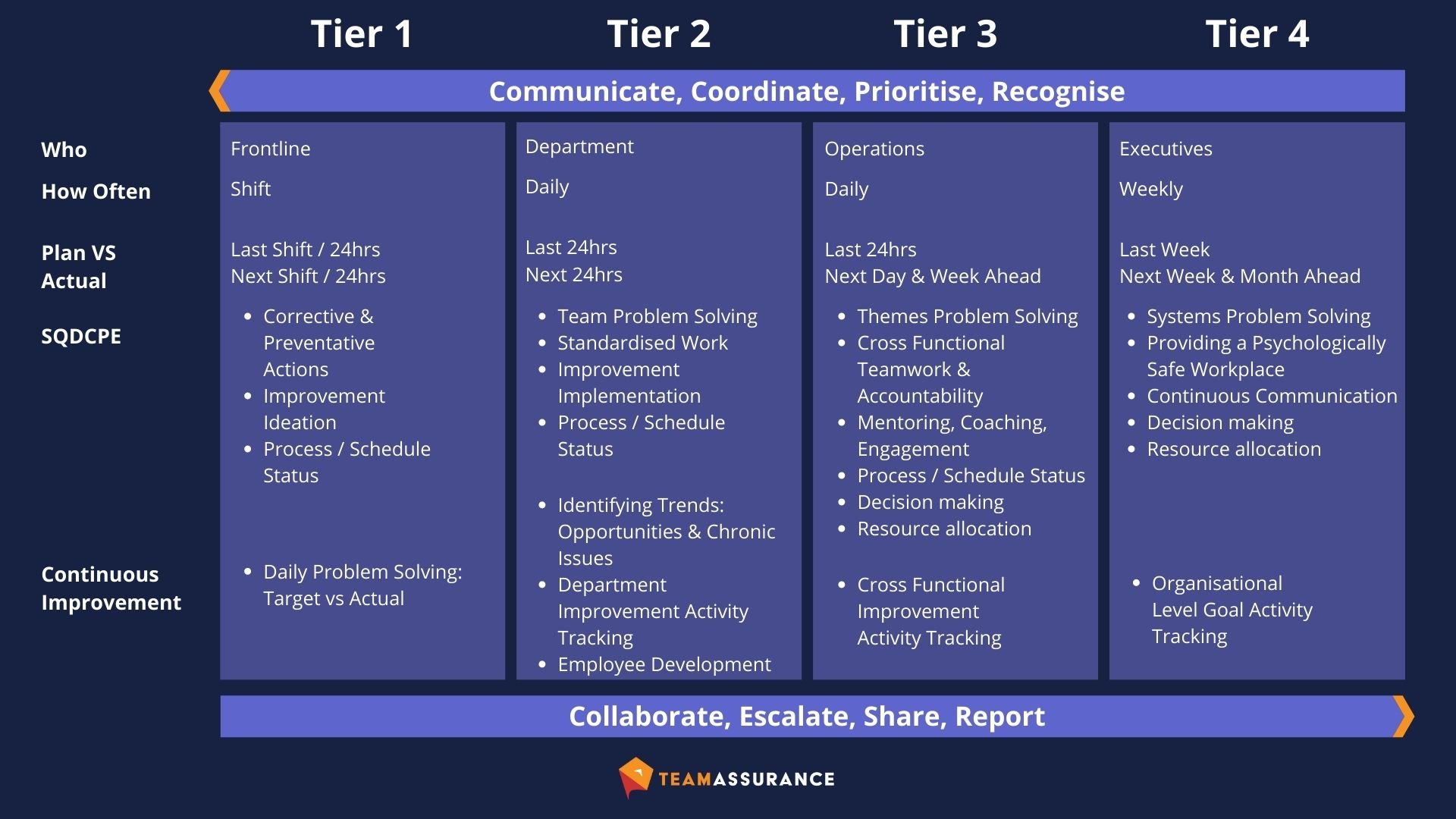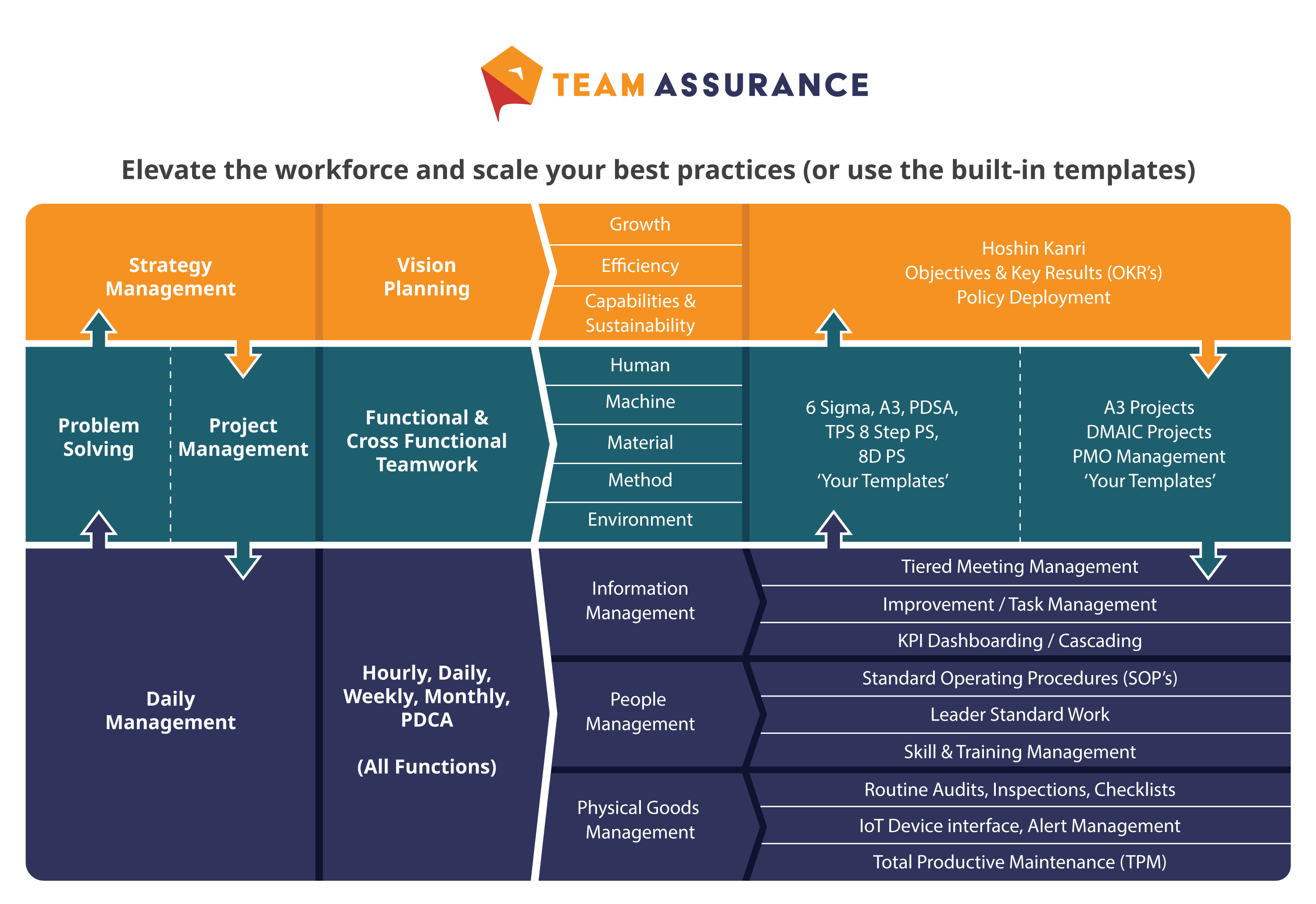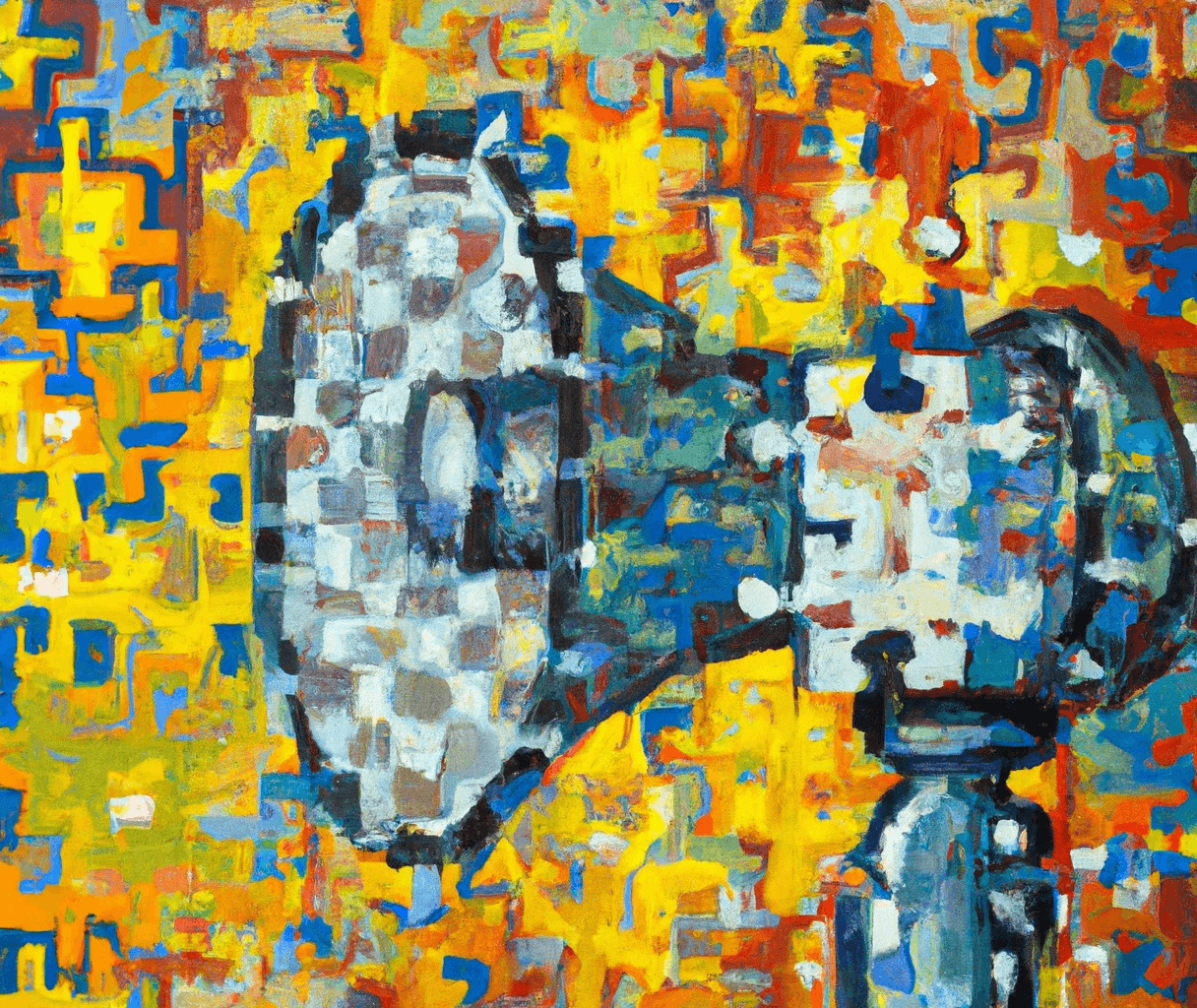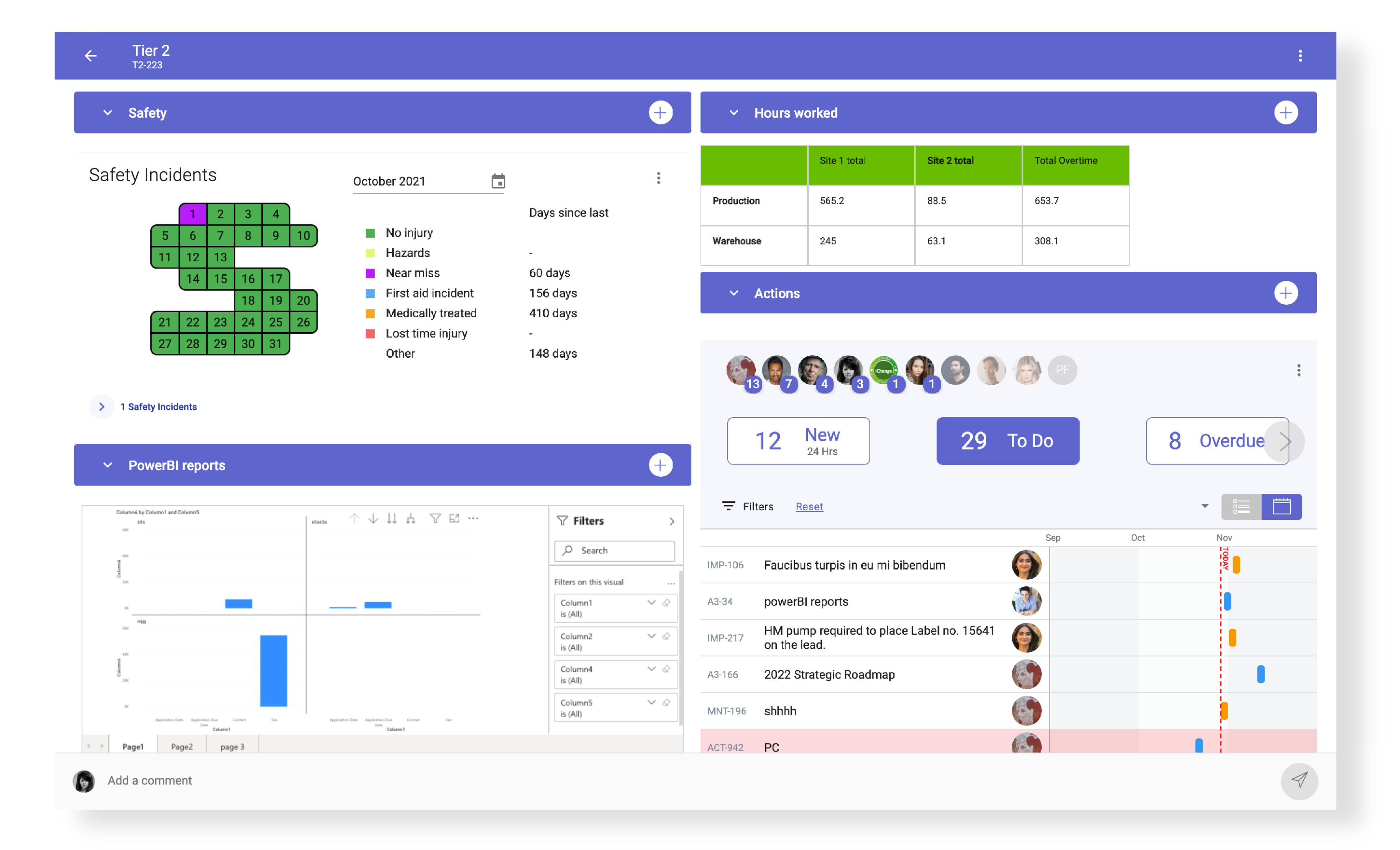The better we build we build our systems for communication and problem solving, the smoother our improvement processes (or any process really) will flow.
As a leader, optimising the flow of information and materials through your process is a key priority.
However, achieving this requires building effective communication and problem-solving structures that facilitate the exposure of process performance and flow of communication between individuals, teams, and functions.
Visual management for communication and problem solving
One important tool for building effective communication and problem-solving structures is your daily visual management system. This system should provide a clear visual representation of process performance and highlight any areas where improvement is needed.
With the right visual cues, teams can quickly identify when action is required, and leaders can track progress towards goals.
Learn more about visual communication options to maximise your tiered meetings.
Tiered meetings and collaboration
Another important structure for problem solving is daily tiered meetings. These meetings provide a platform for cross-functional teams to come together, discuss progress, identify potential issues and agree on actions to improve. Of course, engagement is more than just having a stand up meeting each day.
It is about creating an environment where the flow of information is free, and it is focussed on the right things to enable real action and improvement.
You can see collaborative problem solving and frontline-led improvement in action in the video below. Watch as the implementation of 5S in a workshop is supported and contributed to by multiple teams and tiers:
We must always aim to enable ‘at-a-glance operation and at-a-glance management’. That means taking the time to consult with our audiences as we develop and implement any tool and regular meeting agendas.
We need to understand what they want to see and how they need to see it. It is critical that we explain and clearly communicate why there is a need for it in the first place. Next we must ensure that the visuals are clear and are expressed in the most simple, relatable terms.
There should not be any ambiguity or confusion when looking at a visual board. People completely unfamiliar with the process should be able to make sense of what the visuals are communicating.
This goes for every level of our organisation. Just as our frontline should be meeting daily / on a shift-by-shift basis, managerial and executive staff should also be meeting at a regular cadence.

By ensuring that all levels of the organisation are engaging in regular huddles, you can encourage collaboration and ensure that everyone is working towards the same goals.
The influence of standardisation on communication and problem solving
To enable collaborative problem-solving and effective communication leaders must provide a framework for the teams to work together. When this is in place our teams can identify and rectify the underlying causes of problems, rather than just treating the symptoms. This approach ensures that the right improvements are made, leading to long-lasting results.
The below is an example of the impact of such a framework, when supported by a lean daily management system:
Standardisation is another key component of effective communication and problem-solving structures. Leaders must develop standard processes and leaders’ standard work that are practiced with discipline over time. This ensures that everyone is working in a consistent way, and it becomes easier to identify and improve upon areas where deviation from the standard has occurred.
A C.I. Framework Not Isolated, Locally-Optimised Islands
Like the communication and problem solving structures discussed above, tools like Standard Operating Procedures (SOPs), and a Tiered Daily Management process supporting the entire PDCA loop will align everyone with organisational and department goals every day. This key to achieving success and solving problems daily. It will facilitate focus, and stimulate conversations around exactly what we need to solve problems effectively.
But, we must refrain from thinking of each element of our continuous improvement efforts as a locally-optimised island.
The graphic below demonstrates how we developed TeamAssurance as an interconnected platform to avoid disconnected ‘Point Solutions’ (digital or analog) that can hinder your continuous improvement efforts.

If you’re an organisation in need (or a consultant with clients in need) and you’d like to discuss digital-aids to Lean tools, contact us for a demonstration of the TeamAssurance platform.







